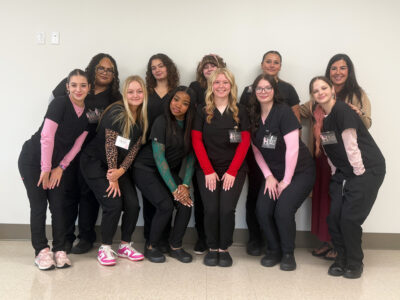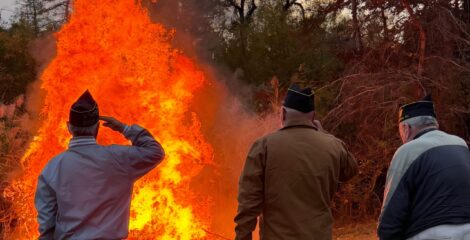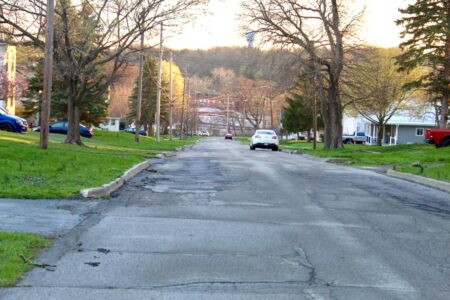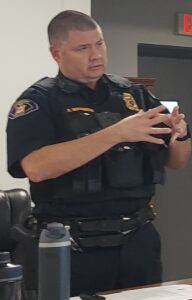Riding brings bits of progress
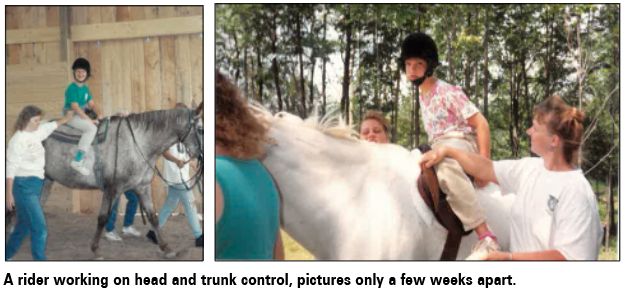
Empathy is the ability to perceive another person’s perspective, to understand, feel, and possibly share and respond to their experience.
This article is about science, simplified, but profound. Once again, the horse makes a difference.
Cerebral palsy (CP) is a neurological condition that affects movement, muscle tone, and coordination. It occurs when the developing brain is deprived of oxygen, often before birth or during the birthing process, and is the most common cause of motor disability in children worldwide.
The symptoms of CP can vary greatly.
Babies are born with primitive reflexes that are survival mechanisms. These reflexes, controlled by the brainstem, help infants respond to their environment before higher brain functions can develop.
These primitive reflexes should naturally integrate into voluntary motor skills. However, in children with cerebral palsy, these reflexes may either persist too long or fail to integrate, interfering with normal motor development and coordination.
Physical therapists are trained to help minimize the effects of persistent primitive reflexes. Therapy focuses on three key foundational components: Positioning (Posture)- Establishing proper alignment of the body; Stability- Developing the muscle control needed to maintain posture; and Mobility with Stability- Building controlled, purposeful movement.
In children who develop typically, these stages happen naturally through lots of play and movement exploration. For children with CP, however, therapists must teach and facilitate each one, since they can’t move on their own or overpower the reflexes. The mastery of head control, especially in midline and against gravity leads to the integration of these reflexes into higher function.
As a pediatric therapist, I often relied on a variety of positioning and supportive equipment for alignment and minimizing the reflexes so that the child might be able to move their arms to reach. I could often use techniques to gain head control and movement following the natural developmental sequence to achieve milestones such as rolling, sitting, standing, and eventually walking. It was always challenging work, each child’s progress influenced by many factors. I often recruited parents to help, explaining every step as we worked together. Even then, there were never quite enough hands or enough opportunities for movement.
When possible, I began working with children with CP on horseback as early as age three. When positioned properly on the horse, with hips stabilized and legs gently abducted and flexed, the horse carrying the weight of the rider, the focus could then be directed on developing head and trunk control in an upright position against gravity, using key points of control.
The horse’s rhythmic, three-dimensional motion allows the child to experience repetitive, coordinated movement patterns essential for building motor control, something that is nearly impossible to replicate without the horse.
While I used therapy balls for similar purposes during home visits, the horse provided far greater benefit, with much less exhaustion on my part.
Most of the children (and adults) with CP who came to our barn for therapeutic riding were well beyond early development stages, so, we would just start where they were, and still we saw progress.
Muscle tone challenges are common in people with cerebral palsy, most often the muscles are overly tight (spastic). Sitting on a walking horse helps stretch and relax the hip and leg muscles, improves alignment, and gently activates core muscles.
The horse’s movement stimulates automatic reflexes, (different from primitive reflexes). Because these reflexes are triggered naturally and rhythmically, they help strengthen muscles without increasing spasticity. Over time, this imprints on the brain for sensory-motor regulation and coordination, just like a developing child who can experience this through movement and play.
Through repetition, the brain begins to “remember” these coordinated movement patterns, now integrating signals with the cognitive part of the brain, which is the part necessary for voluntary movement. Sometimes progress is barely noticeable, but it adds up over time. What is so immediately apparent are the belly laughs and the smiles. The body is relaxed, the digestive system is activated, the blood is circulating, and the movement must feel amazing.
As children with CP grow older, therapy opportunities often decrease, especially after they leave school. At the same time, increased body weight and muscle tightness can make walking more difficult. Therapeutic riding is also so valuable at this stage, helping to maintain flexibility, strength, and function while offering emotional and social benefits as well. CP doesn’t go away and there is no cure yet. It is a lifelong challenge.
Centaur Stride no longer has physical therapists to directly work with participants, so head and upright sitting control must be present to be able to participate in our riding programs, but there may still be opportunities to participate in our other programs. For more information, visit us online at linktr.ee/centaurstride or call (716) 326-4318.
Claudia Monroe is founder and president of Centaur Stride.


